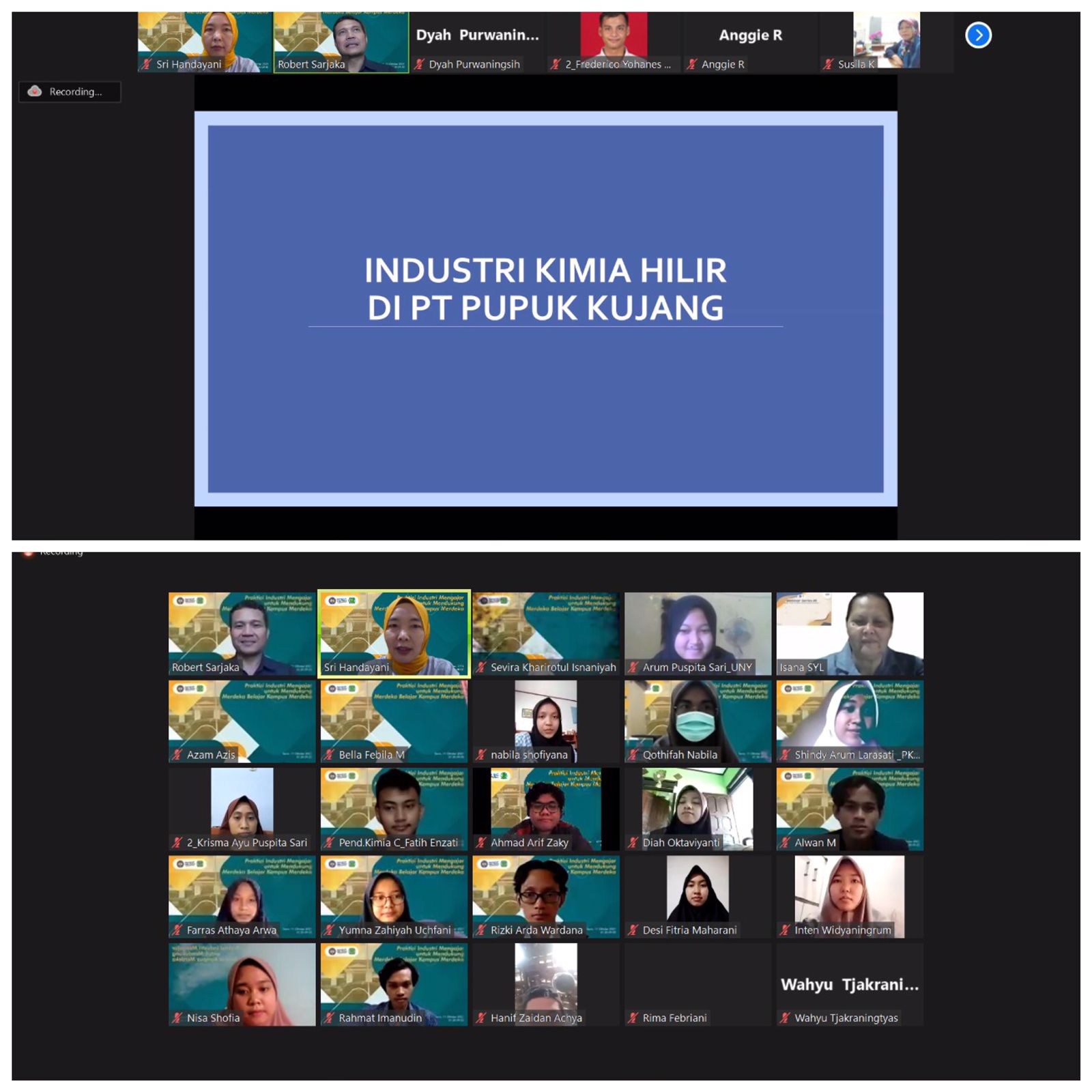You are here
TEACHING PRACTICES: CHEMICAL INDUSTRY DOWNSTREAM PT. PUPUK KUJANG

On Monday, October 11, 2021, the Chemistry Study Program, Faculty of Mathematics and Natural Sciences, UNY, invited practitioners from PT. Pupuk Kujang to teach online courses on Analysis of Industrial Materials and Structures and Reactivity of Organic Compounds through Zoom Meetings. This activity was attended by 105 participants including lecturers and students of the Chemistry study program, FMIPA UNY. Practitioners who fill the lecture are Mr. Ir. Robert Srjaka, MT. IPU who currently serves as director of operations and production of PT. Kujang Fertilizer. Mr. Robert started his career at PT. Pupuk Kalimantan Timur since 2000 by occupying various positions with his last position being GM Operation 1. Starting August 25, 2020, he was subsequently assigned to serve as Director of Operations and Production of PT. Kujang Fertilizer.
In his presentation, Mr. Robert conveyed about: (1) Profile of PT Pupuk Kujang, (2) Downstream Chemical Industry at PT Pupuk Kujang, and (3) Potential of Downstream Chemical Industry. PT Pupuk Kujang is a subsidiary of PT Pupuk Indonesia (Persero) which was established on June 9, 1975. PT Pupuk Kujang is located in Dawuan Village, Kec. Cikampek is about 70 km from Jakarta, with a total land area of ± 510 Ha. The main business of PT. Pupuk Kujang is a fertilizer trade by producing 2 main products, namely: (1) subsidized fertilizers including urea, phonska, and petroganik and (2) non-sub/retail products including nitrea, pareku rice seeds, nitroska, etc. In addition to producing fertilizer, PT. Pupuk Kujang also produces liquid ammonia and CO2 (food grade).
In relation to the potential of the downstream chemical industry, PT. Pupuk Kujang is related to: (1) the upstream stage includes LNG, ammonia, and methanol, (2) the intermediate stage includes caprolactam, urea, ammonium nitrate, acetic acid, biodiesel fuel, formaldehyde, DME, and olefin, and (3) downstream stage includes melamine, NPK, vinyl acetate, PTA, fuel, MEG, and polyolefin. Through lecture activities, teaching practitioners on campus are expected to be able to contribute to providing students with an overview of the industrial world that is useful, especially when students graduate and become chemical researchers.
Information System
Kontak Kami
Program Studi Kimia
FMIPA Universitas Negeri Yogyakarta
Kampus Karangmalang Yogyakarta 55281
Telp. (0274)586168 Pes. 115
Email: kimia@uny.ac.id atau s1kimia@uny.ac.id
Copyright © 2025,
